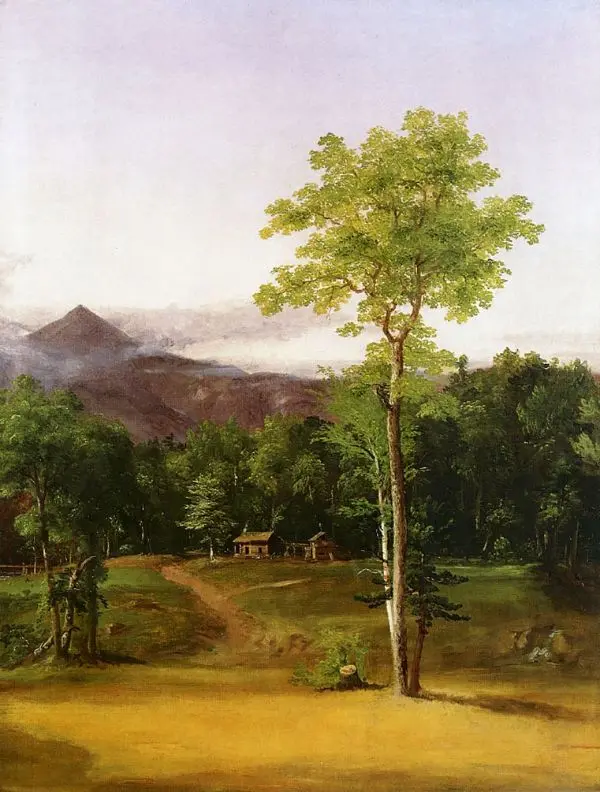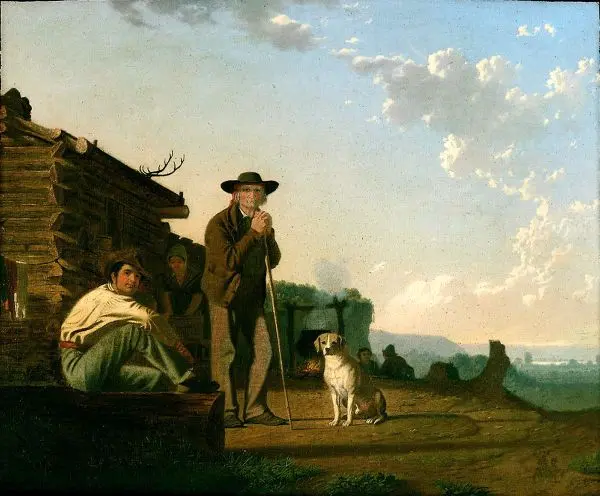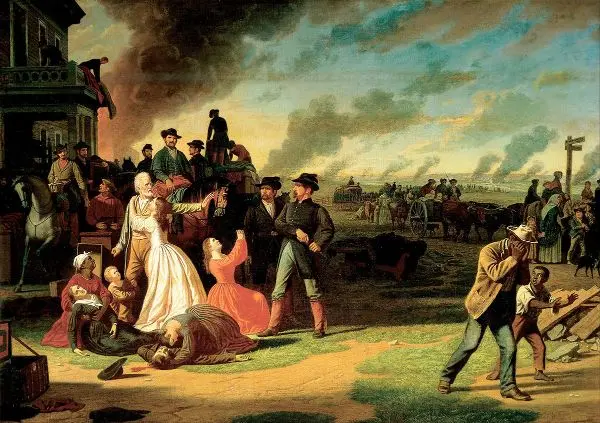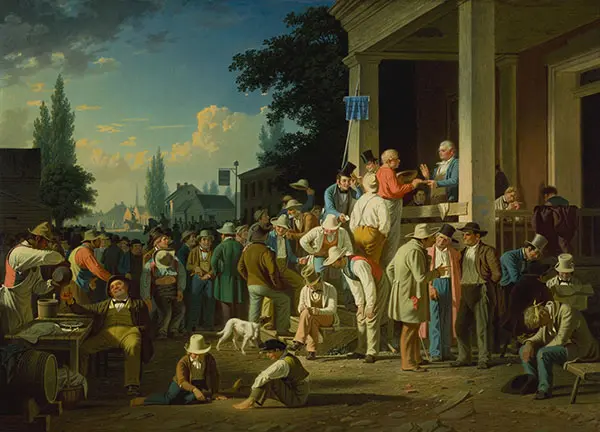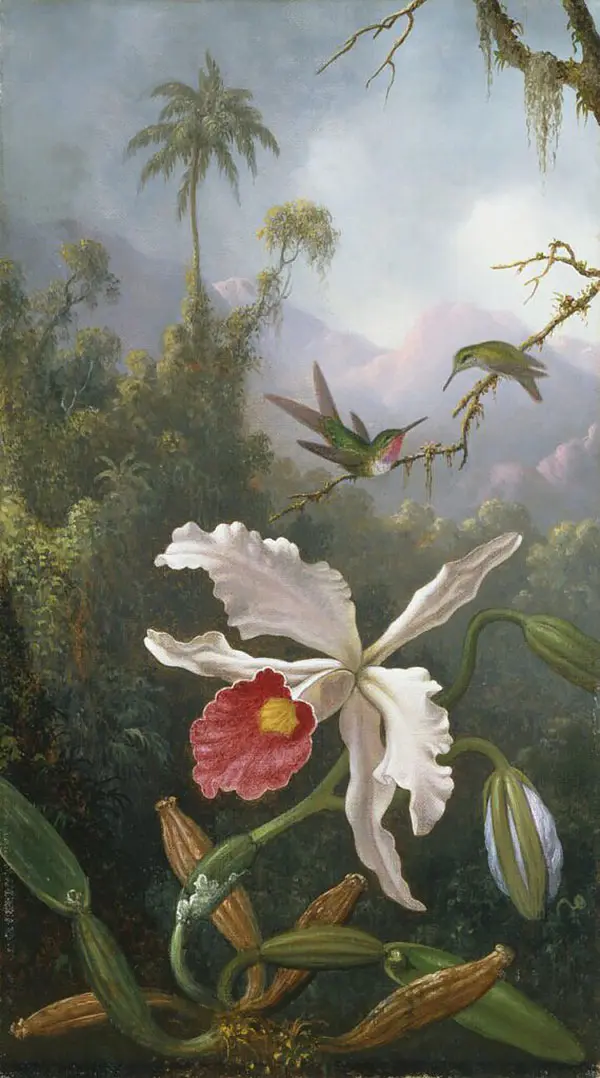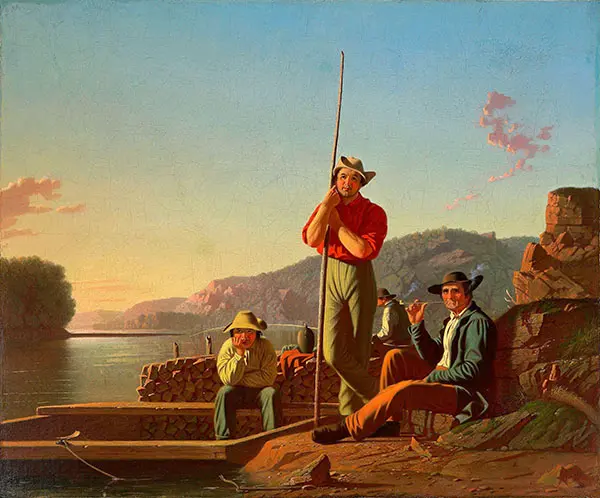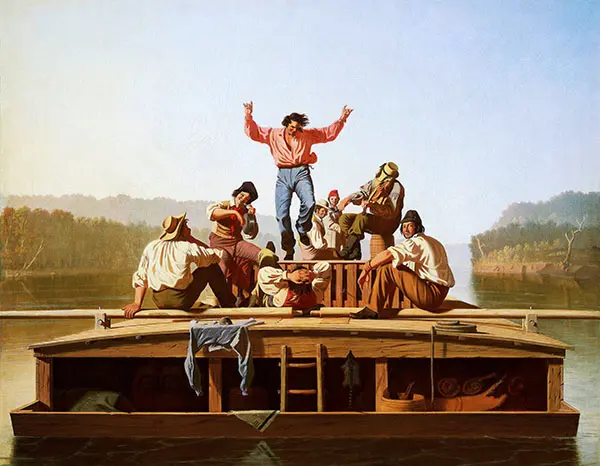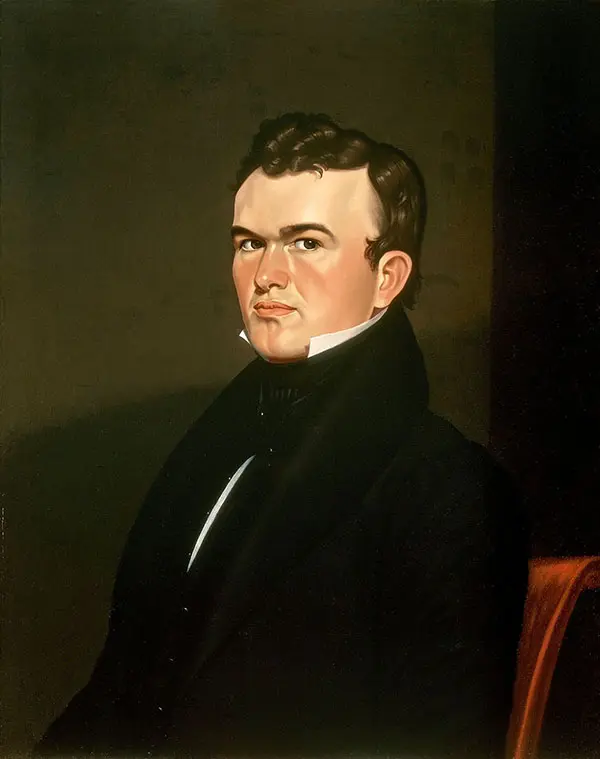Hudson River School Oil Painting Reproductions
Find Hudson River School Oil Painting Replicas by Hudson River School Artists
Hudson River School Paintings: A Brief Introduction
Hudson River School artists shaped American art of the nineteenth century. These groundbreaking painters celebrated the American landscape in all its glory.
Influenced by Romanticism, these artists painted winding rivers, awe-inspiring mountains, forests, valleys, and America’s legendary landscapes such as Yellowstone and Niagara Falls. As the name suggests, they often focused on the Hudson River Valley in New York State and the surrounding areas. Later, many artists expanded into New England, Western America, and Southern America.
This brief introduction explores this fascinating movement and its most pioneering painters.
Was the Hudson River School an actual school?
This art movement was not a physical school building. Instead, it was a group of artists working in close collaboration, often painting the Hudson River Valley in New York. This artistic movement includes paintings created between 1825 and 1875.
Scholars aren’t sure who came up with the name first. Some argue that the art critic Clarence Cook, who wrote for the New York Tribune, originated the “Hudson River School” description. Others claim it was Homer Dodge Martin, a well-respected landscape painter.
Whatever its origins, we know people first used the term as an insult. Around the same time, The Barbizon School prioritized “en plein air” techniques and loose, expressive brushstrokes. Consequently, the Classical oil paintings of the Hudson River School appeared increasingly outdated and old-fashioned.
However, many American collectors, patrons, and the general art public embraced the Hudson School style, also associated with the Luminism art movement. The School's famous artists were renowned for their technical skills and the beautiful natural landscape paintings they created.
What was the Hudson River School, and why is it important?
The Hudson River art movement was the first proper artistic group in America. Before this, painters worked alone or in loosely formed associations. However, they did not work on specific styles or subject matter. This innovative approach made it incredibly important. The movement also reflected major social themes and issues of 19th century America, prioritizing discovery, exploration, westward expansion, and settlement.
Hudson River School painters mirrored all these themes in their oil paintings. In addition, they showed deep respect for the natural landscape and how we coexist peacefully with the natural world. As a result, their paintings employ intensely realistic, detailed techniques. They often present idealized and romantic views of the natural world. Paintings contrast agricultural expansion with the ever-decreasing wilderness areas of the Hudson Valley.
Most Hudson River School artists were active Christians. They saw nature and the incredible American landscapes as a true reflection of God’s will and action.
Who is the founder of the Hudson River School movement?
The artist Thomas Cole founded the Hudson River School. He was a leading figure in the movement and started painting Hudson River landscapes in the mid-1820s. Indeed, Cole hiked into the Catskill Mountains, based in New York State, in 1825. This expedition launched the Hudson River School. Favorable reviews appeared in the New York Evening Post, and on multiple occasions, Thomas Cole returned to the area, painting artworks such as The Clove, Catskills c.1827.
However, Cole’s paintings were not always strictly realistic, and he often included imaginative elements in his dreamy landscapes. Thomas Cole paintings include The Titan’s Goblet c.1833. It is a Fantasy painting and one of his most enigmatic oil paintings. It shows a giant goblet standing atop the world, with vegetation, buildings, and tiny inhabitants living along its rim.
Despite being a quintessentially American art movement, Thomas Cole was an English émigré. Other painters associated with the School include Asher Brown Durand, a close friend of Cole, Robert Walter Weir, and Thomas Doughty.
The Hudson River School artists took inspiration from various European painters. These influences included French masters such as Claude Lorrain, famed for his classical landscape paintings, and the English Romantic painter John Constable. JMW Turner paintings, with their imaginative and expressive landscapes, were also a pivotal influence.
What did the Hudson River School believe?
Hudson River School artists believed in representing nature truthfully and beautifully. In addition, they reflected themes and ideas in American culture, such as nationalism, patriotism, and our relationship with the environment. Hudson painters often distrusted economic and technological developments, such as the American Gold Rush and the expansion of the railways.
Although inspiration came from many European painters, Hudson River School artists developed a uniquely American painting style. They proudly celebrated the unique aspects of the American landscape, seen in paintings such as The Marshes at Rhode Island by Martin Johnson Heade and View of Yosemite by Thomas Moran.
Who was the second generation of Hudson River School artists?
In addition to early Hudson River School painters such as Thomas Cole, a second generation emerged. These artists flourished in the 1850s and 1860s after Cole died in 1848. They include painters such as Frederic Edwin Church, one of Cole’s most promising students, Sanford Robinson Gifford, and Albert Bierstadt.
These artists often painted with Luminism techniques, a style focusing on the effects of light with intensely detailed and tranquil scenes. Bierstadt also adored the Düsseldorf School of Painting, stemming from the German city where he studied during his youth.
Thousands of eager art lovers paid 25 cents a person to view Bierstadt and Church’s paintings. These epic landscapes, for instance, Niagara 1857 and Storm in the Rocky Mountains 1866, shocked and astounded the American public. These wild paintings reflected the glory and vastness of the natural world and proved influential in subsequent trends such as the National Parks Movement.
Where are most of the Hudson River School paintings?
The Wadsworth Atheneum Art Museum in Hartford, Connecticut, boasts one of the largest Hudson River School art collections. They display over 65 artworks by Albert Bierstadt, Frederic Edwin Church, and Thomas Cole.
However, art museums all over the world hold Hudson River School paintings. For example, the Smithsonian American Art Museum in Washington, DC, displays Albert Bierstadt’s famous painting Among the Sierra Nevada, painted in 1868.
London’s National Gallery also held a major retrospective of Frederic Church’s landscape paintings and sketches. The monumental Niagara Falls, From the American Side, owned by National Galleries Scotland, was featured in the exhibition.
The Hudson River School Artists: Albert Bierstadt Paintings for Sale
If you love the atmospheric beauty of Hudson River School paintings and Lumism art, explore our extensive collection of oil on canvas paintings. Buy famous art reproductions from incredible landscape artists Albert Bierstadt and Thomas Cole. Oil paintings for sale are available in many sizes, and we specialize in oversized wall art.
Testimonial from Debra Jo, New York
Cannot Find What You Are Looking For?
Reproduction Gallery Information
Customer Service
(Send Us A Message)
Tel: (302) 513 3464

